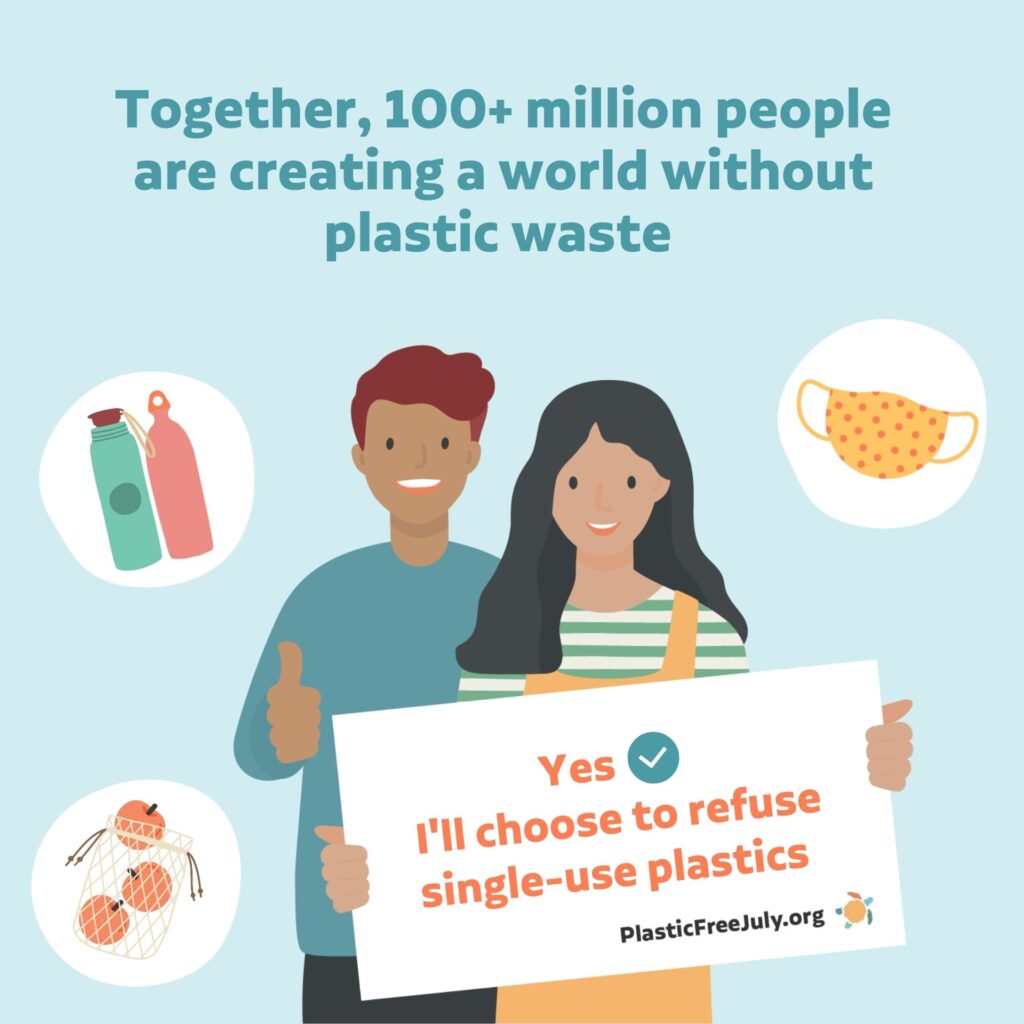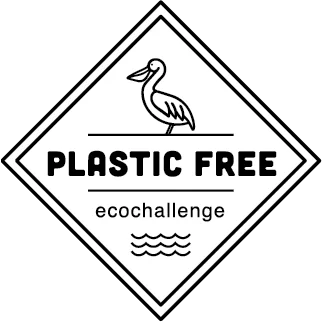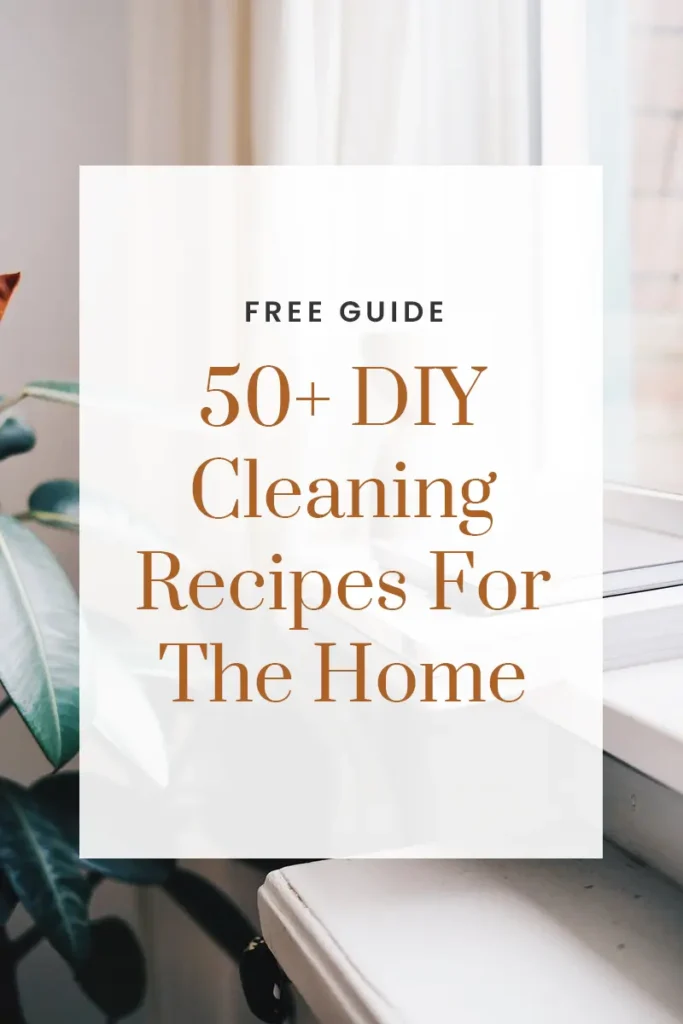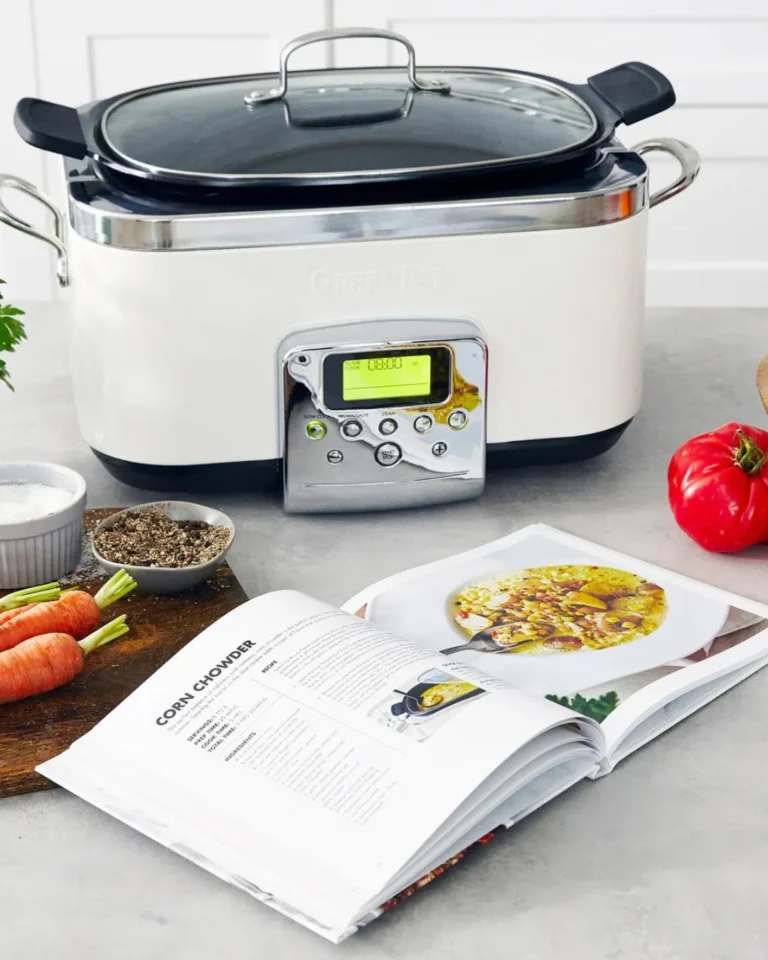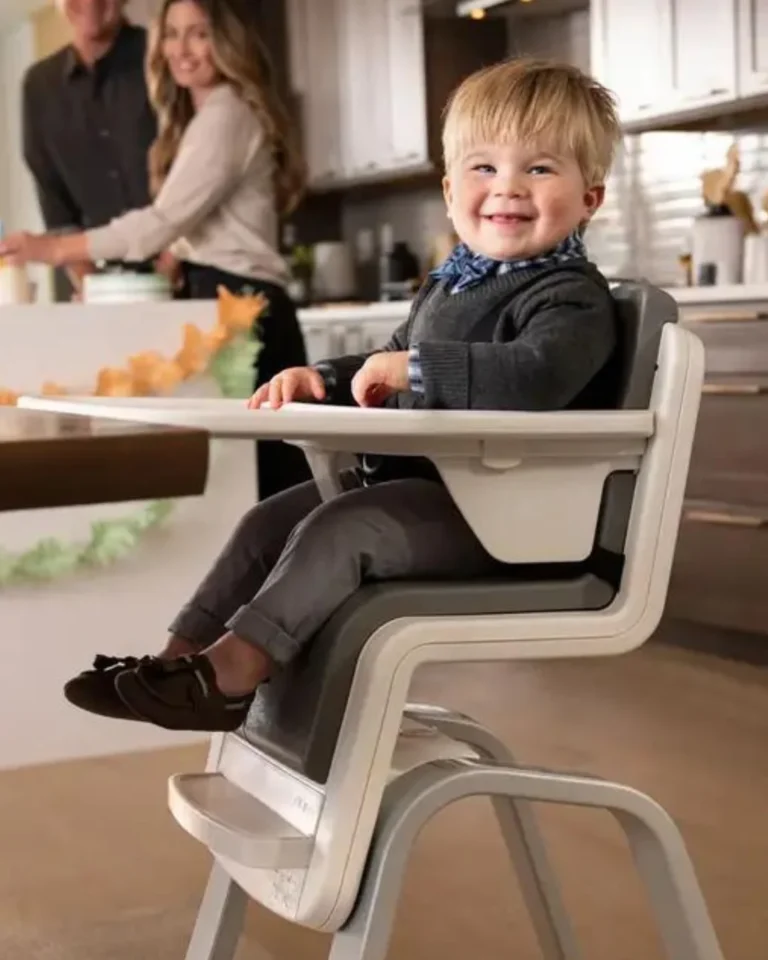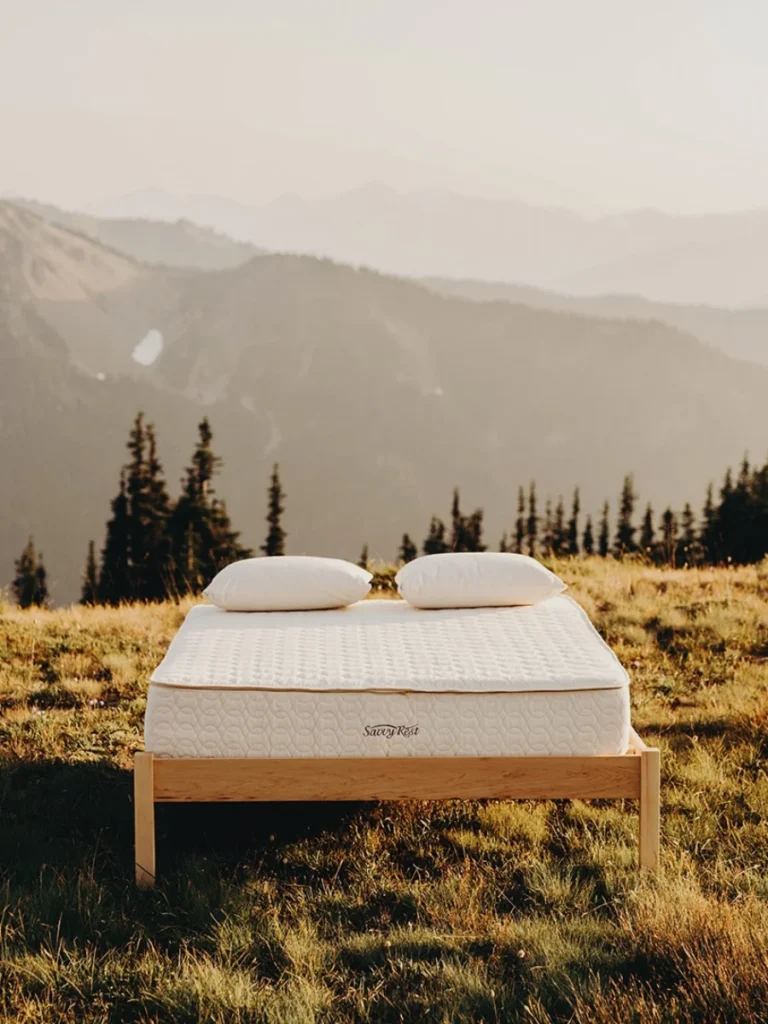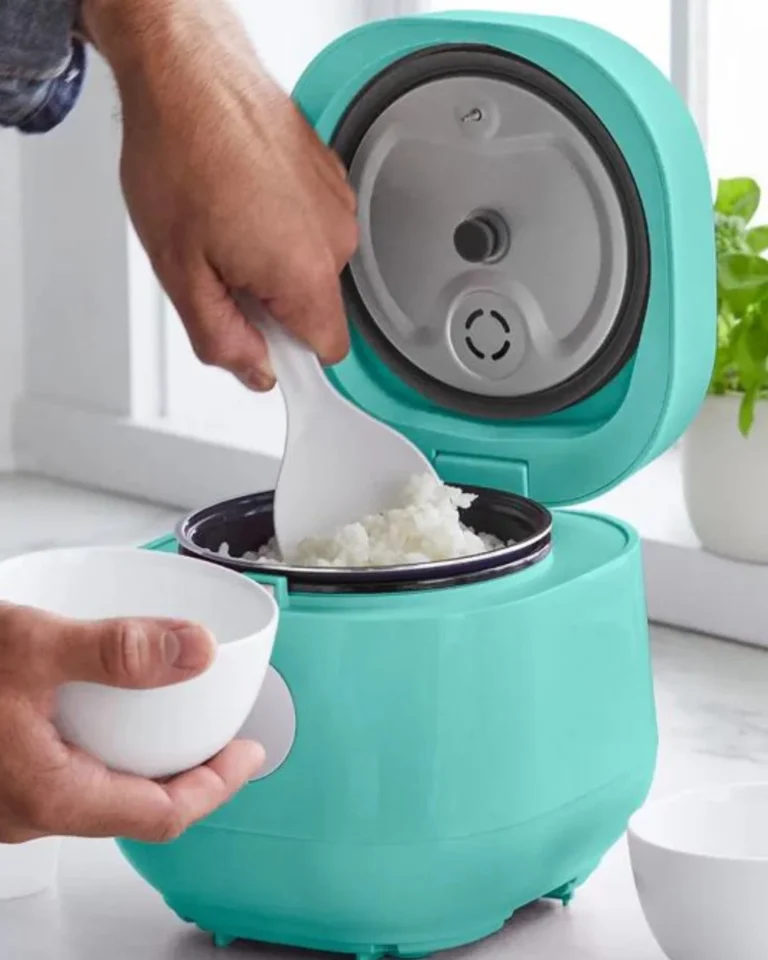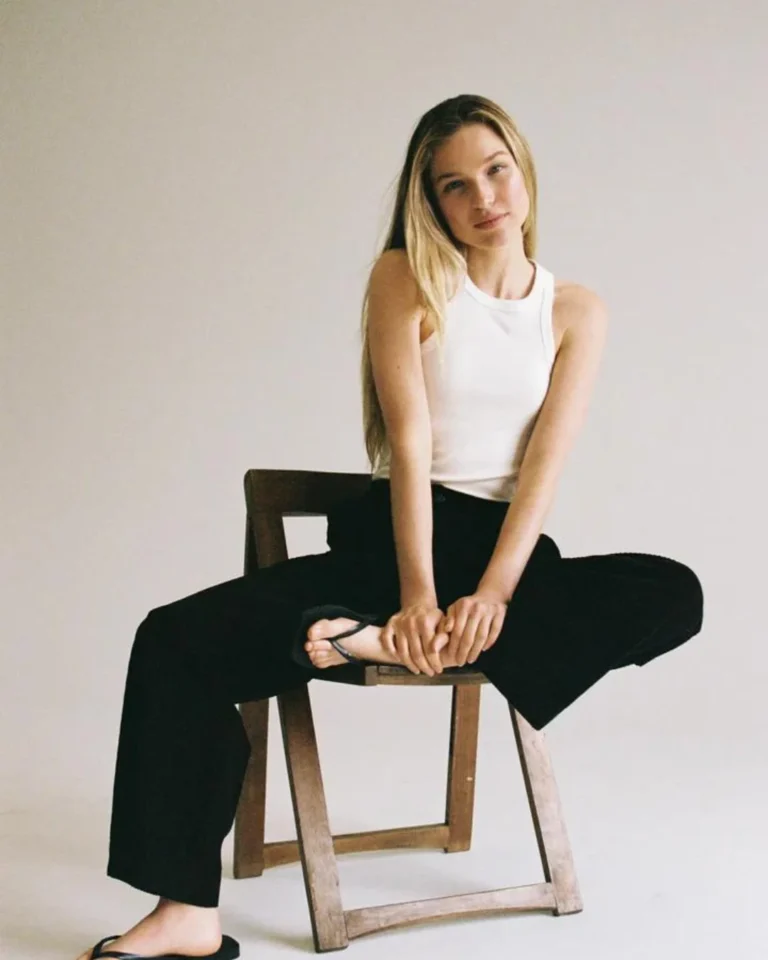SKL is reader supported. When you buy through links on our site, we may earn affiliate commission. Learn more here.
In February 2017, I discovered the zero waste and plastic-free movements. How? By scrolling Facebook.
A coworker had shared a 5-minute Buzzfeed video of someone trying to go zero waste for 30 days. As a career environmentalist, I was immediately intrigued by the title, and clicked “play.”
That video, quite literally, changed my life.
Overnight I became completely hooked on learning new ways to reduce my impact on the planet. From tossing a cloth napkin-wrapped metal fork wrapped in my purse while running out the door to work to asking for no straw in my morning frappuccino – I was ready to change.
And with that, I consumed as much knowledge as I could possibly get my hands on.
It was all so new to me, and I was hungry to learn.
In this deep learning period, I read about this thing called “Plastic Free July” in Beth Terry’s book, Plastic Free: How I Kicked the Plastic Habit and How You Can Too.
And something clicked.
I immediately knew that this project was something special. Its practicality and down-to-earth approach to reducing and refusing single-use plastics was something I’d never considered before. You don’t have to be perfect, and every small action matters.
So what exactly is Plastic Free July, why does it matter, and how can you participate?
What is Plastic Free July?
In 2011, Rebecca Prince-Ruiz was a local government employee in Perth, Australia, who had just toured her local recycling facility. Later that night, as she went to take her recycling to the curb, she was struck with the realization that there was more she could be doing to protect the planet than recycling her plastics.
The next day, she walked into work, told her colleagues she wanted to go plastic-free for one month, and asked if they wanted to join her.
That’s it.
That’s all it took to begin a massive, global movement!
That first year, Rebecca and her colleagues got 40 households on board with the challenge.
The next year, they created a Facebook page, hosted a documentary screening (Bag It – a ~classic~ plastic-free doc), and organized a couple hands-on workshops.
In 2013, they launched the website PlasticFreeJuly.org, and the word started to spread. In just that third year, less than half of the participants were from Australia.
The challenge continued to grow and reach new audiences, and in 2017, the nonprofit organization Plastic Free Foundation was born with the founding principle that small changes add up to a big difference.
The Plastic Free July Challenge
The challenge itself is simple: refuse single-use plastics for one month.
But what exactly that looks like is up to you.
- If you’re just hearing about the problems with plastics, focus on the “Big 4” – plastic bags, bottles, cups, and straws.
- If you’re ready to make bigger changes, look at single-use plastics as a whole and start saying “no thanks” to as many as you can.
- Or, really challenge yourself and go all-in – try to avoid all the plastic you can for one month.
Why is Plastic Free July important?
Plastic was originally invented in the 1860s as an alternative to ivory in billiard balls (an undoubtedly important shift), but very quickly got out-of-hand.
After World War II ended, plastic manufacturers could no longer sell their plastic products to the government, and needed to shift their consumer base in order to stay in business. That’s where we came in.
All of the plastic cups, plates, forks, food wraps, garbage bags – even disposable diapers and fake flowers – that we’re surrounded by today got their start in the 1950s when plastics manufacturers told us that “no housewife need bother” doing the dishes. Just throw them in the bin instead!
At the time, it was a novel idea.
But today, all that plastic adds up.
Plastic is a completely synthetic material derived from fossil fuels, that’s designed to – quite literally – last forever. And yet, plastic bags, for example, are used for an average of just 12 minutes before being thrown away.
So…what happens to all that plastic??
Well, according to the Ellen MacArthur Foundation…
- 40% is sent to landfill
- 32% is lost to the environment (ending up in our waterways and other natural spaces)
- 14% is incinerated
- 14% is collected for recycling
But of that 14% that’s sent to recycling…
- 4% is lost in the recycling process
- 8% is downcycled into a less-valuable material
- 2% is closed-loop recycled (recycled into the same or similar-quality application)
So while recycling may give us all the warm and fuzzies, only 2% of what we put in the bin actually reduces demand for new, virgin plastics.
And when that 32% are lost to the environment, the constant exposure to water, air, and sun cause them to lose quality and break down into smaller and smaller pieces, eventually becoming microplastics, which have been found in our food, drinking water, blood, placentas, testicles, breast milk…basically everywhere.
So while recycling is a critical piece of a circular economy, it’s not the solution to the plastic crisis.
10 Ways to Celebrate Plastic Free July!
There are nearly infinite ways to celebrate Plastic Free July, but the #1 tip I can offer you is this: don’t try to do everything at once.
It can be so easy to fall into the trap of trying to be 100% plastic-free right out of the gate, but in order for sustainability to be, well, sustainable, it has to be sustainable for us, personally. Going all-in on day one may be exciting, but – take it from someone who’s been there 🙋♀️ – can easily lead to burnout.
We’re running a marathon here, not a 100-yard dash.
Try just one or two things at a time. Once they’re habit, try another.
So to get you started, here are my top 10 favorite ways to celebrate Plastic Free July:
Of course, the number one way to celebrate Plastic Free July is to start at the source!
Sign up for the challenge on the Plastic Free July website, and you’ll get tips and tricks throughout the month to help you refuse and reduce single-use plastics.
If you’re looking for specific, actionable, and tangible ways to reduce your plastic use, the Plastic Free Ecochallenge is going to be your new favorite resource.
With over 100 different actions to choose from and resources to help you along the way, you’ll curate your own challenge for the month of July and watch the real-time impact of our collective actions add up.
With actions ranging from avoiding plastic bottles to divesting from fossil fuels, no matter where you are in your plastic-free journey, you’ll find your next steps in the Plastic Free Ecochallenge.
Find a team near you, join the Community Team, or create your own team!
We cannot reduce our waste if we do not know our waste.
Every July, I like to do a one-week waste audit. Every time I toss something in my trash or recycling bin, I make a note of it.
It’s important to note that there’s no guilt here, just data collection.
At the end of the week, I’ll review and tally up all my waste, and brainstorm some solutions to the items at the top of the list.
- Throwing out several paper towels a day? Give Swedish dishcloths a try.
- Tossing your morning coffee cup every afternoon? Take your own mug to the coffee shop.
- Lots of junk mail piling up? Get your name off those pesky mailing lists.
A waste audit gives us a starting point, so we can start to make the small changes that will have the greatest impact in our own life. Because no two eco-journeys will look the same, you gotta do what works for you.
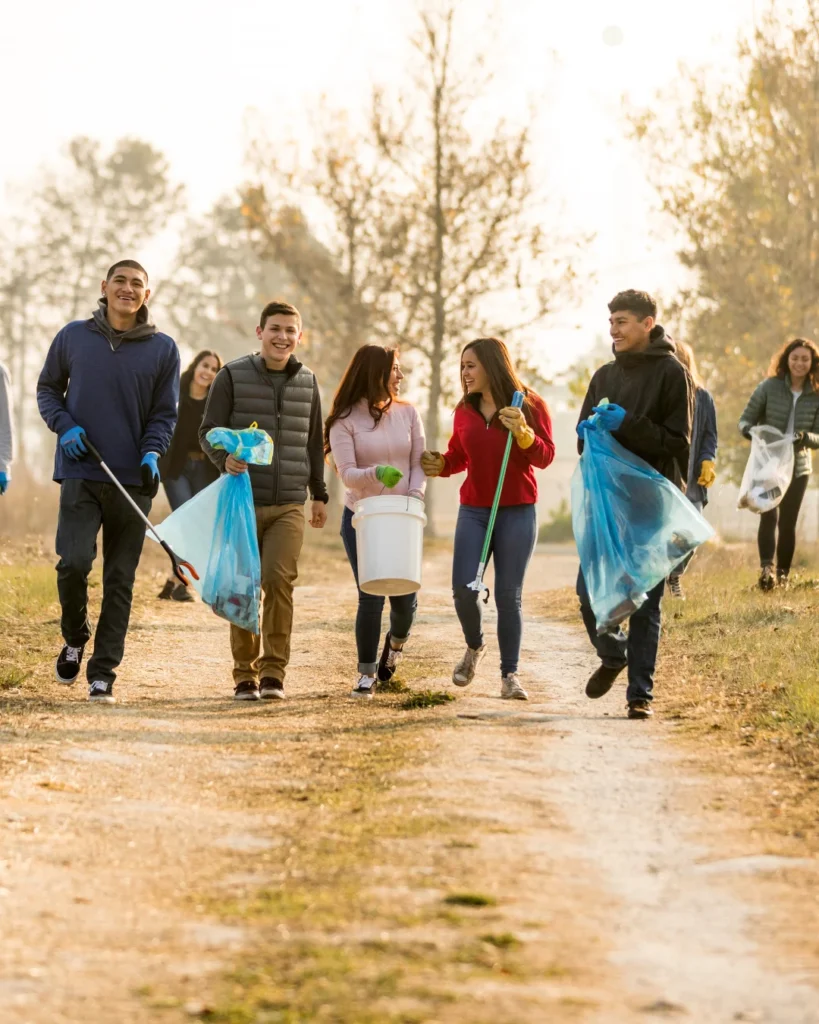
Like I said, the solution to our plastic problem isn’t just cleaning it up – we gotta refuse it at its source.
But there’s so much plastic out there just waiting to be picked up and properly thrown out.
So find a cleanup effort happening in your area and join them! Plus, you’ll get a nice boost of those warm and fuzzy feelings from doing your part to protect your local environment.
Zero waste stores have been popping up all over the place over the last few years. These are small, locally-owned businesses that sell everyday essentials in minimal packaging, typically with closed-loop refill options too.
Find your local zero waste store through the Refillery Directory, or check out the SKL guide to online zero waste stores if you don’t have one near you, and find your next plastic-free swap this month.
Yep, I said it. Cancel your Amazon Prime account in honor of Plastic Free July.
Did you know that Amazon ships 13 million packages every single day? And if Amazon were a country, it would be the 45th most carbon-emitting country, more than 75% of the world?
And even though Amazon Prime makes you think you’re saving money with all of their free shipping promises, the average Amazon Prime member spends about $1,500 every year on Amazon. The average non-Amazon Prime member, on the other hand, spends just $600 – less than half of what Prime members spend.
Instead of funding Bezos’s next mega-yacht, support small, intentional, sustainable businesses putting people and the planet first (and buy less!).
When we get down to it, it’s not so much that plastic is evil. It’s that we live in a society that’s centered around consumption and individualism. We cannot just replace single-use plastics with single-use bioplastics or single-use paper products – we’ll still be in the same or similar mess we’re in now.
Instead, let’s focus on buying less and sharing what we have. Use what you already have and get creative with what’s already around you. If you really do need to buy something, try to support a sharing or secondhand economy first.
- Join a local Buy Nothing Group
- Ask friends and family
- Join a tool library (and your regular local library, too!)
- Check secondhand shops (there are even online secondhand shops for more variety)
- Check Facebook Marketplace
- Check OfferUp
I couldn’t tell you how many things I’ve gotten from checking these resources before buying new. I’ve quite literally lost count. But a few of my favorites? My new (to me) rug I’m sitting on while writing this post, 12 houseplants, and my handmade solid-wood office desk.
It all starts by asking, “Can this be done differently? How can this be done better?”
It is SO fascinating to learn about the history of single-use plastics and how we became such a disposable society. Once you understand how we got here, it’s so much easier to understand how we can move beyond plastics and all of the interconnected pieces that are at play.
So take a few minutes and dive into the history of plastics. I promise it won’t disappoint.
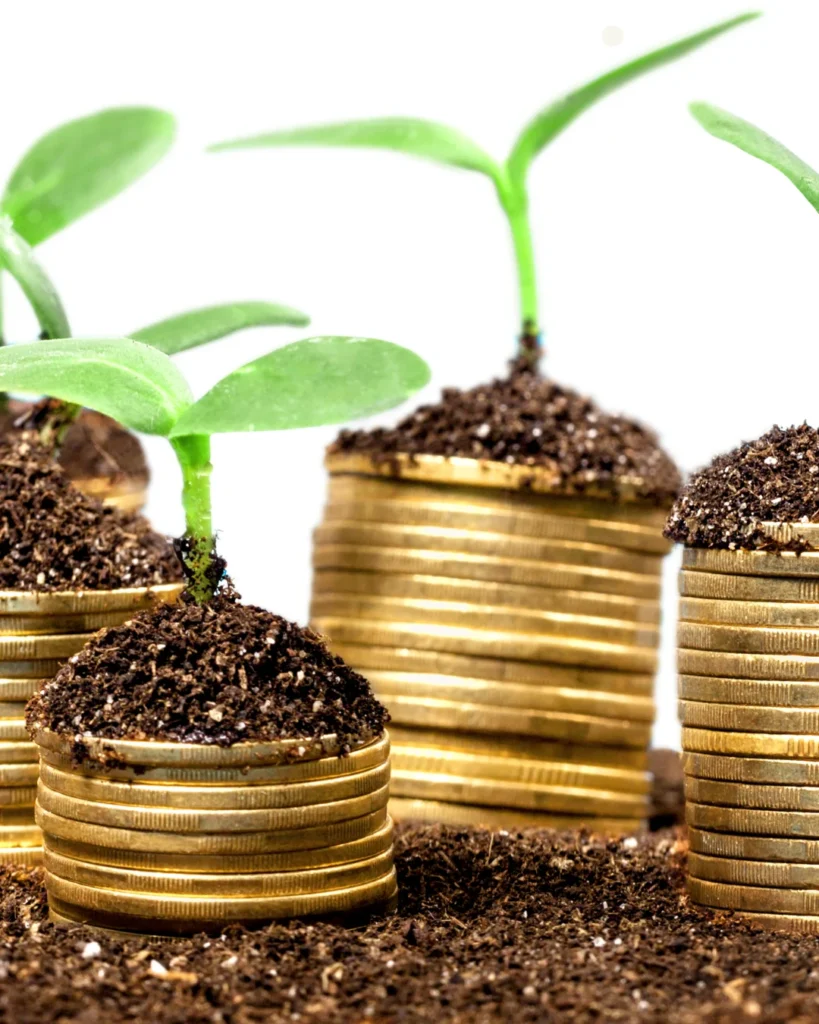
Did you know that banks are one of the top financiers of fossil fuels? Just since 2016, the 60 biggest banks in the world have collectively invested $6.9 trillion in the fossil fuel industry – with JP Morgan Chase, Citigroup, Bank of America, and Wells Fargo all sitting in the top 5.
Our savings accounts, retirement accounts, and investment accounts are all part of this ecosystem.
I know it’s not the most fun topic, but it’s arguably one of the most important ones we can tackle. So this year, in honor of Plastic Free July, have a “money date” with yourself and start to create a plan to divest from fossil fuels and reinvest in ways that align with your values.
Refusing and reducing plastics in our own life is a great step toward a sustainable future. But why should we stop there?
Talk about what you’re doing with your friends and family.
Share about it on social media.
Invite them to join you in Plastic Free July and the Plastic Free Ecochallenge.
I get asked all the time how to get more people on board with plastic-free living, and the #1 piece of advice I can give is to just talk about it. And, truth be told, by reducing plastics in your life, you’re going against the status quo, and those around you will naturally be curious. They’re going to want to ask you questions about it.
Are you ready to jump into the plastic-free July challenge?!
I started this post by sharing how I found the zero waste and plastic-free lifestyles – from a coworker who shared a 5-minute Buzzfeed video on social media. If it weren’t for that video, my life would be drastically different than it is today.
I’m forever grateful to that coworker for clicking the “Share” button that day. It’s such a small act, and yet, the ripple effects are truly immeasurable.
So share what you’re doing! Don’t judge, shame, or guilt-trip – just live your plastic-free or plastic-less life and others will join you.
Happy Plastic Free July, friend! Drop a comment below and share how you’re celebrating this month 👇
 Enter To Win Over $1500+ In Non-Toxic Goodies!
Enter To Win Over $1500+ In Non-Toxic Goodies! 